Handrails [§504.6, §505]
Handrails are required on both sides of stairs and must be continuous within the full length of each stair flight. Inside handrails on switchback or dogleg stairs must be continuous.
Stairway Handrails
Recommendation: In facilities that primarily serve children, a second set of stairway handrails 28” high maximum above stair nosings is advisable. A vertical clearance 9” minimum between upper and lower handrails will help prevent entrapment.
Handrail Extensions [§505.10]
Handrail extensions at the top and bottom must return to walls, guards, or floors and horizontal portions must comply as protruding objects. The length is measured to the start of the return radius.
Handrail Clearance and Cross Section [§505.5, §505.7]
Surface requirements and clearances facilitate a power grip along the length of handrails. Handrails can have circular or non-circular cross-sections, but must have rounded edges. The gripping surface and adjacent surfaces must be free of abrasive or sharp elements. Wall-mounted handrails with leading edges higher than 27” cannot protrude more than 4½” into circulation paths (§307.2).
Circular Cross Section and Clearance
Non-Circular Cross Section and Clearance
Recommendation: Projecting objects above handrails can impact their usability. Keep wall surfaces above handrails free of any protrusions.

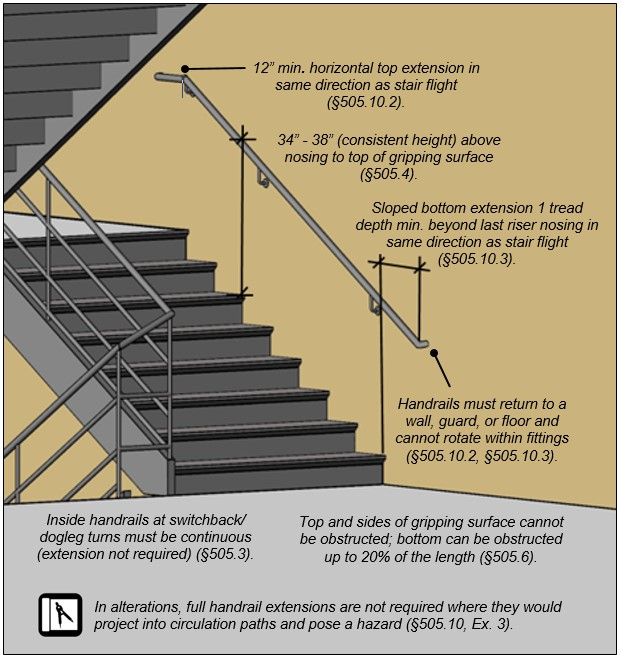

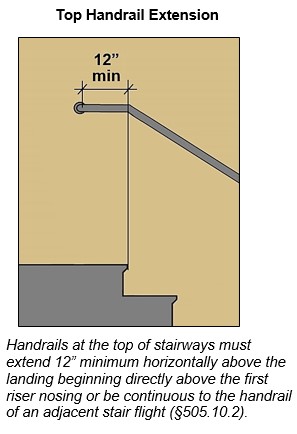
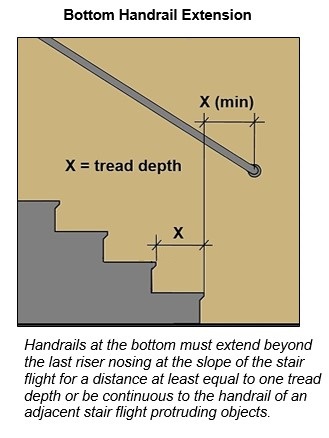
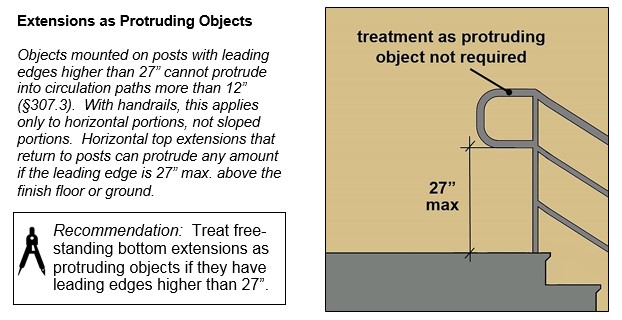
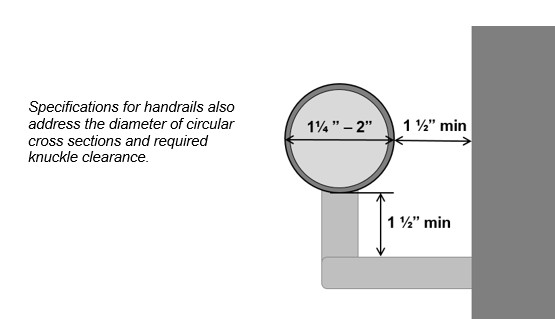
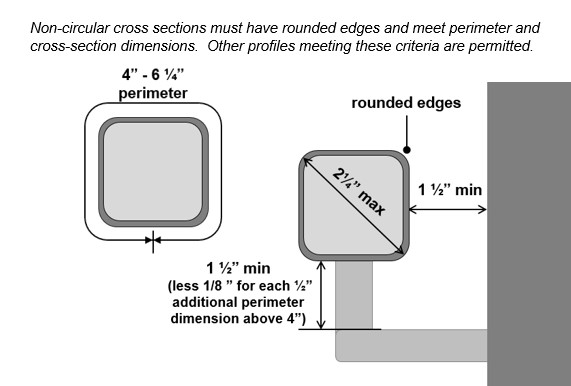

User Comments/Questions
Add Comment/Question